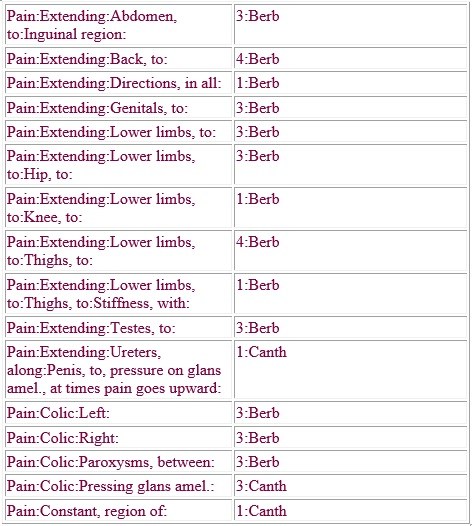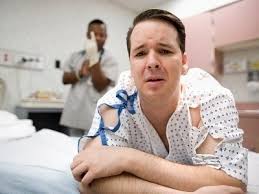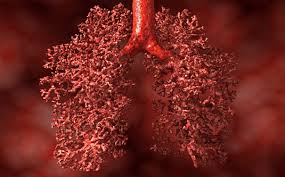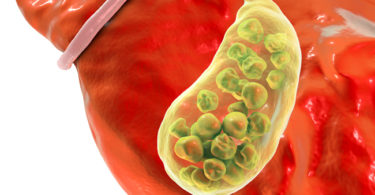ABSTRACT– Renal stone also called as renal calculi, nephrolithiasis [refers to presence of stone in kidney] or urolithiasis [stone originating anywhere in the urinary system, including kidney and bladder]. Kidney stones are mineral deposits in the renal calyces and pelvis that are found free or attached to renal papillae. They contain crystalline and organic components and are formed when the urine becomes super saturated with respect to a minerals It is an increasing urological disorder of human health ,affecting about 12% of the world population it has been associated with an increased risk of end stage of renal failure. They are hard deposits made of minerals and salts that form inside your kidney.
INTRODUCTION:
Before we proceed further to study renal stone, we should be clear about basics of kidney, its location, structure, and functions. Our urinary system consists of kidney, ureter, urinary bladder and urethra. Kidney is a vital organ that removes waste and filters our system.
- Kidneys are a pair of bean shaped organ on either side of the vertebral column. Each kidney is roughly 4-5inch long, around the size of your first fist.
- Left kidney: located at T12 toT13 vertebrae,
- Right kidney: located slightly lower due to displacement of liver.
- Upper portion of kidney is protected from 11th and 12th rib.
- Weight- male: 125-175 gm, female: 115-155gm.
- Dimensions: length 11-14cm, width approx. 6cm, thickness approx. 4cm.
- Kidneys are excretory organ that help body pass waste as urine, they also filter blood before sending it back to heart.
- URETER: size of ureter is approx. 30cm [11.81] in adults, 3-4mm in diameter. [because of this stones that are 7mm or larger are unlikely to pass spontaneously.
- There are 3 sites where a kidney stone will commonly become stuck:
1. At the ureteric junction of renal pelvis,
2. As the ureter passes over the iliac vessels,
3. Where the ureter enters the urinary bladder [vesicoureteral junction].
TYPES OF RENAL STONE:
- Calcium Oxalate Stones: Most common type of stone. It results when urine contains low level of citrate and high level of calcium and oxalate or uric acid. It is mostly caused by intake of beets, black tea, chocolate, nuts, potatoes and spinach.
- Calcium Phosphate Stones: It is caused by abnormalities in the way the urinary system functions. It occurs simultaneously with calcium oxalate stones.
- Struvite Stones: It occurs most commonly in women. it is caused by certain types of UTI. Theses bacteria or infectious agent grow quickly and become large, sometimes occupying entire kidney. If it is left untreated it causes severe UTI and even loss of kidney function.
- Uric Acid Stones: This type is more common in men. It occurs in those people who did not drink sufficient water or have high diet in animal protein. Occurs more commonly in those who have gout, family history or had chemotherapy.
- Cystine Stones: It is caused by hereditary genetic disorder called cystinuria that can lead to excessive amount of amino acid cystine collecting in urine. This can result in formation of stone in bladder and ureter, which transports urine from kidney to bladder.
Homoeopathy and Renal Stone:
Homoeopathy plays a very important role in cure of renal stone. Homoeopathy has got some very effective and beneficial remedies to cure renal stone. These remedies are safe, effective, and without any side effects.
Common Homoeopathic Remedies for Renal Stone:
- ARGENTUM NITRICUM: Pain in kidney from congestion of kidneys or passage of calculi. Urine dark, contains blood or deposits of renal epithelium and uric acid, passes often and little at a time, in drops. Urine burns while passing and urethra feels swollen.
- BELLADONA: Renal calculi with sharp, shooting pain. Pain comes suddenly, crampy straining along ureter, during passage of calculus. Feverish and excitable. Irritation and clutching and spasm where in gall stone or in renal calculi.
- BENZOIC ACID: Nephritic colic with offensive urine. Urine deep red, of strong odour, at times dark brown in colour, smells cadaverous, putrid. Urine alternately thick like pea soup and then clear like water. Patient feels as if urine is profuse, thick and offensive, suffers in joints-heart when it is clear and scanty.
- BERBERIS VULGARIS: It is an excellent homoeopathic remedy for kidney stone when there is radiating type of pain from kidney to bladder. It has tearing cutting pain in kidney, extending down the ureters to the bladder or urethra, or shooting all through the pelvis and into the hip, cutting and sticking pain in bladder and urethra. In this kidney pain extend to testicle of affected side, urine hot, dark, or bright yellow or blood red with white, greyish, or bright red, meanly sediment or red granules or yellowish red crystals. Cannot bear jar. Urine dark, turbid, with copious sediment, slow to flow, but constantly urging.
- CALCAREA CARB: Extremely useful when stones are composed of calcium. Acts well in cases of kidney stone, irritable bladder, incontinence while walking, urine is dark brown, sour, foul, or of strong odour, white sediments with white milky urine, at times bloody.
- CANTHARIS: One of the best homoeopathic remedies during paroxysm of renal colic. Pain and excitement found in no other remedy. renal region sore and sensitive to touch, dull pressing pains in kidney, cutting contracting pains in ureter and down the spermatic cord, with retraction of testicles or shooting into legs or thighs. Intolerable urging, before, with, and after urination, violent pain in bladder {cystitis}. Thirst with aversion of all fluids.
- CHINA SULPH: Acts very well in cases of kidney stones when there is brick dust or straw- yellow deposits in the urine.
- CHIMAPHILA UMB: Constant pain in region of kidneys. Fluttering sensation in kidneys. Catarrh of bladder caused by stones. Smarting pain from neck of bladder to end of urethra. Great quantities of thick, ropy, bloody mucus in urine. Urine colour of green tea. Queer symptom feels as if sitting on a ball.
- HYDRASTIS: Dull aching in kidney region. Intense pain in left ureter. Frequent, scanty urination, with burning at the end of it. Thick, ropy, mucous sediments in urine.
- HYDRANGEA: It is used for the intense pain of gravel and calculus. Relieves distress from kidney stone pain, with soreness kidney region and bloody urine.
- LACHESIS: Stitches in kidney, extending down through ureters. Pain in left lumber region. Pain and tenderness left iliac region, intolerance of pressure. Extremely sensitive to touch, especially throat and abdomen.
- LITHIUM CARB: Kent’s repertory gives lithium carb. In black type for renal calculi. Curious symptoms, “pain in hearts when urinating: when bending over”. Heavy deposits, urine- dark, reddish brown. Soreness and sharp sticking pain right side of bladder.
- LYCOPODIUM: It is one of the main homoeopathic remedy for kidney stone. It helps in kidney stone removal when there is right renal colic, pain extending down [right] ureter to the bladder, with frequent urging to urine, urine scanty, high coloured and deposits a red or yellowish red sandy sediment. Severe backache while passing urine, rumbling and blotted feeling in abdomen. In this kidney stone pain extends along ureter and ends in bladder, not down leg. Lithic acid in urine. Red sand in clear urine. Can dissolve phosphate stones.
- NATRUM PHOS: This remedy has excellent action over oxalate stones.
- NUX VOMICA: Indicated in renal calculi when one kidney, especially the right is the seat of the disease. Pain extending to genitalia and down legs, with nausea and vomiting. Each pain shoots to the rectum and urges to stool. Must strain to urinate, bladder is full and urine dribbles away, yet when he strains it ceases to dribble.
- OCIMUM CAN: Excellent homeopathic medicine for kidney stone removal, kidney stone especially in the right kidney with pain on the right side. Urine smells like musk and when allowed to stand for a while, brick dust red or yellow sediment at the bottom, urine with contains uric acid. Agonizing and twisting pain, which makes patients scream and groan. Red urine with brick dust or white sediments. Renal colic where there is considered haemorrhage. Urine has brick dust sediment and considerable blood.
- PAREIRA BRAVA: When stone is in the kidney for a long time, it helps in kidney stone removal. Very useful in irritable bladder, renal colic and prostatic affections, it has been found useful in cystitis. Urine is black, bloody with thick mucus and there are violent pains in the thigh, sometimes the patient has to kneel to urinate, pressing head firmly against the floor, and the urine scalds terribly. Violent pain in glans penis, itching and inflammation in the urethra and dribbling after urination. Urine passes drop by drop with violent tenesmus, nausea, vomiting of bile.
- SARSAPARILLA: Urine dribbles away when sitting, on standing passes urine freely, passes gravel or small calculi, blood with last or urine, painful retention of urine. Sand in urine or in diaper, has to get up several times at night to urinate, intolerable smell of genitals and of urine, thinking of his pains causes them to return or grow worse. Pain from right kidney to downward. Tenesmus, extreme pain at conclusion of urination, yells with pain or urine passes without sensation. White sand in scanty, slimy or flaky urine, or red sand in clear urine. Urine passes freely when standing.
- SILICEA: Renal and vesical calculus. Involuntary discharge of urine after urination. Constant urging. Nightly incontinence.
- TABACUM: Pain down the ureter, with deathly sickness and cold sweat. Nausea with burning heat in abdomen the rest of the body being cold. Patient persists in uncovering the abdomen. Such sickness suggests tabacum in renal colic.
- URTICA URENES: The use of this homeopathic medicine in kidney stone removal is very old. It acts as a cleaning agent of the kidney and eliminates gravel from them. When used after expulsion of stones, prevents their recurrence. Kidney stones with thick urine.
RARE GROUP OF HOMOEOPATHIC REMEDIES:
- ASPARAGUS: Colic due to kidney stones, gravel passing in small quantities with urine, urging to urinate, bloody urine, strong smelling urine, after urination, burning in urethra, with sensation as if some were still passing, swelling of penis, with erection and urging to urinate.
- BRYOPHYLLUM: For very large stones. It helps to break them.
- IPOMEA NIL: This homeopathic remedy is especially useful for the passage of stone from kidney to bladder with severe cutting in either renal region, extending down ureter. Pain excites nausea.
- EPIGEA REPENS: Chromic cystitis, with dysuria, tenesmus after micturition, muco-pus and uric acid deposits gravel, renal calculi. Fine sand in urine of a brown colour. Burning in neck of bladder whilst urinating and tenesmus afterwards. Pyelitis, incontinence of urine.
- ERYNGIUM AQUATICUM: Tenesmus of bladder and urethra. Difficult and frequent micturition. Spasmodic stricture. Renal colic. Congestion of kidney with dull pain in back, running down the ureters and limbs. Irritable bladder from enlarged prostate gland, or from pressure of uterus.
- HEDEOMA: Dragging pain from kidney to bladder. Dull pain over left kidney. Burning irritation at neck of bladder causing frequent desire to urinate and inability to retain urine for more than few minutes, better urinating. Cutting pain along left ureter.
- OXYDENDRON– ANDROMEDA ARBOREA: Suppressed urine, vesical calculi. Irritation of neck of bladder. Prostatic enlargement. A remedy for dropsy- ascites and anasarca.
- PRUNUS SPINOSA: It has special action on urinary organs. Cramp-like pain in bladder region, worse walking. Tenesmus of bladder. Ineffectual effort to urinate. Urine seems to pass as far as glans, and then returns and causes pain in urethra. Must press along time before urine appears.
Rubrics Related to Renal Stone In Different Repertories:
Rubrics related to renal stone from Pocket manual of homoeopathic Materia medica with Indian medicine and repertory:
URINARY SYSTEM:
- ENURESIS-incontinence: Arg.n ,Bell, Benz.ac, Caust, Cina, Dulc, Equis, Eup.purp, Ferr.p, Gels, Kali.br, Kreos, Lupul, Nuv.v, Puls, Rhus ars , Sabal, Santon, Sep, Sul ,Thyr, Uran, Verbasc.
- FEELING- as if ball or plug, in bladder: Anac, Kali.br, Lach, Santal,
- INFLAMMATION (cystitis)-Acute: Bell, Camp, Cath, Cop, Cup, Dul, Equis, Eucan, Eup.purp, Ferr.p, Gels, Merc.c, Sant, Pareira, Saurur, Stigm
- INFLAMMATION (cystitis)- Chronic- Ars, Benz.ac, Buchu, Can.s, Cath, Caust, Chimaph, Cop, Dul, Epiq, Eup.purp, Fabiana, Hydr, Merc.c, Pareira, Pop.tr, Puls, Sep, Stigm, Uva.
- IRRITABILITY- bladder and neck: Apis, Bell, Benz.ac, Berb.v, Camph, Canth, Equi, Eup.purp, Nux.v, Petros, Sinic, staph, Stigm, Tereb, Tritic.
- CALCULI-GRAVEL (nephrolithiasis)- COLIC: Arg. N, Bell, Berb. V, Canth, Diosc, Epiq, Eup.purp, Lyc, Nit.ac, Nux.v, Ocimum, Pareira, Sars, Solid, Stigm.
- PAIN IN RENAL REGION: Acon, Berb.v, Canth, Helon, Lyc, Sulph
- URETHRA- burning, smarting heat: Acon, Apis, Arg.n, Berb.v Can.ind, Can.s, Canth, Caps, Clem, Hydrang, Merc, Petros, Sulph, Tereb, Thuya.
- URINARY FLOW-DESIRE-constant desire: Absinth, Acon, Bell ,Berb.v, Can.s, Canth, Caust, Eup.purp, Ferr.mur, Lil.t, Murex, Pareira, Sabal, Sinc, Stahph, sul, T huya, Tritic.
- DYSURIA-difficult, slow, painful: Acon, Alum, Apis, Arg.n, Ars, Bell, Benz.ac, Can.ind, Can.s, Canth, Cap, Caust, Clem, Epiq, eup.purp, Fabiana, Hep, Lyc, Morph, Nat.m, Ol.sant, Op, Plumb, Sabal, Santon, Sep, Solid, Tritic, Uva.
- ODOR-fetid, foul: Am.benz, Aspar, Bapt, Benz.ac, Calc.c, Chimaph, Dulc, Graph, Lyc, Nit.ac, Phos, Sep, Solid.
- SEDIMENT-Type: Aceton (Azoturia)- Calc.mur., Caust, Euonym.
RENAL STONE RUBRICS IN REPERTORY OF HOMOEOPATHIC MATERIA MEDICA:
URINARY ORGANS:
BLADDER:
- CALCULI: benz-ac, berb, calc, canth, lyc, sars, sep.
- CATARRH muco-pus: benz-ac, coloc, dulc, lyc, nux-v, puls, sulph, uva.
- RETENTION: painful: canth, caust, nux.v.
- TENESMUS: agar, ars, canth, dig, lil-t, merc-c, nux-v, pareir, plb, puls, purun-s, puls, ter, thuj.
- PAIN: urination, during: nux. v, equis.
- RETENTION of urine: acon, am-c, apis, arn, ars, bell, canth, caust, con, gels, lyc, nux-v, op, pareir, tarent, ter.
KIDNEY:
- PAIN. extending to bladder: berb, kali bi.
- PAIN. Down ureters: berb, kali-bi, lyc.
- PAIN. Radiating: berb.
- PAIN. Ureter, right side: lyc.
- PAIN. Ureter, radiating, from renal region: berb.
- SUPRESSION OF URINE: acon, apis, arn, ars, canth, carb-v, lach, laur, lyc, sec, stram, verat.
URETHRA:
- PAIN: urination, during: canth, caust.
- PAIN: burning: ars, berb, camph, cann-s, canth, merc, merc-c, nux-v, prun, sil, sulp, thuja.
- PAIN. Cutting: calc-p, canth, con.
- PAIN. Extending, into bladder after urination: lyc.
- PAIN. STRICTURE: canth, clem, nit-ac, petr, puls.
URINE:
- BURNING: aloe, apis, ars, bell, bor, camph, cann-I, cann-s, canth, cub, hep, merc-c, merc, nat-a, nat-c, nat-s, nit-ac, nux-v, sulph, thuja.
- CLOUDY. Standing, on -bell, cham, chel, chin, graph, lyc, ph-ac, ter.
- COLOR. Dark: acon, ant-t, apis, bell, benz-ac, bry, calc, chel, colch, crot-h, colch, crot-h, equis, hell, lach, lact-ac, merc-c, merc, plb, sel, sep, ter, verat.
- COLOR. Greenish: camph, merc-c.
- COPIOUS (increased): acet-ac, aloe, arg-m, arg-n, aspar, cann-I, gels, kreos, lac-c, led, merc, mosch, mur-ac, nat-c, nat-s, ph-ac, puls, rhus-t, spig, squil, sulph, uran.
- ODOUR offensive: apis, arn, bapt, benz-ac, calc, carb-v, dulc, nit-ac, sep, sulph, viol-t.
- SEDIMENT: canth, coloc, lyc, merc, pic-ac, puls, sars, sep, valer, zinc.
- SEDIMENT. Renal calculi: benz-ac, calc, lith, lyc, pareir, sars.
- SEDIMENT. Sand: am-c, benz-ac, led, lyc, phos, sars, sel, sil, zinc.
- SEDIMENT: red(brick-red): arn, ars, arund, dig, lob, lyc, merc-c, pareir, phos, plan, sel, senec, sep.
RUBRICS FROM BOGER BOENINGHAUSENS CHARACTERISTICS AND REPERTORY:
URINE:
- Red: aco, bell, benz-ac, berb, colch, hep, merc, nux-v, scil, sep, sul.
- Profuse discharge, with: arg, bell, carb-a, kre, nat-m.
- Scanty discharge, with can, dig, nux-v, pul, rut, spo, stap.
- Scanty, suppressed: canth, colch, hell, hyo, iod, lau, plb, sec-c, ver-a.
- Turbid, cloudy: breb, bry, cina, merc, lyc, pho-ac, terb, thu.
SEDIMENT:
- Sediment, in general: arn, chin, dul, lyc, merc, nat-m, pho, pho-ac, pul, sars, scil, seneg, sep.
- Brick-colored: lyc.
- Cloudy: berb, lyc.
URINATION:
- Burning: canth, stap, can.
- Difficult: bell, canth, nux-m.
- Dribbling, involuntary: pul, ap.
- Drop by drop (strangury): canth, dul, nux-v, sul.
- Frequent, too: ap, bar-c, caus, kali-n, kre, lach, lyc, merc, merc-c, old, pho-ac, rhus-t, scil, sil, stap.
KIDNEY:
- Calculy: luc, sars.
- Cutting: canth.
- Gravel, stone, etc: lyc.
- Inflammation: merc-c, pul.
- Pain, regions, of: pul.
BLADDDER:
- Inflammation: can, canth, canth.
- Pain, simple, soreness, etc: canth.
- Pressure: nit-ac, nux-v.
RENAL STONE RUBRICS IN HOMEPATH APP:

DIETARY MANAGEMENT OF RENAL STONE:
- People who form renal stone should drink enough water and other fluids to produce at least 2liters of urine a day.
- Avoid drugs like antacids which contains calcium.
- Avoid high sodium diet. Restrict sodium intake to 500-1000 mg per day.
- People who form calcium oxalate stone should include 800 mg of calcium in their diet every day.
- Avoid alcohol, chocolates, tea, tomatoes, vinegar etc as they may irritate the urinary tract.
- Consume lots of vit A, all yellow fruits and vegetables.
- Consume vitamin C and zinc to improve immunity.
- Eat less salt, added sugar, and products containing high fructose corn syrup.
- Limit your intake of animal protein.
- Avoid food and drinks high in oxalates and phosphates.
CONCLUSION:
Homoeopathy has successfully treated several cases of renal stone. Although kidney stones are considered a case of surgery under conventional system to treatment, natural medicines can break down and dissolve kidney stone and help them pass without surgical intervention. In fact, homoeopathic remedies have shown the most remarkable results in treating recurrent tendency of renal calculi.
References-
- Alelign T, Petros B. Kidney stone disease; An update on current concept. NCBI. 2018 Feb 04
- Khan.Sr, Pearle.M.S, Robertson W.G, et.al. Kidney Stones. NCBI. 2016 Feb 25: 2;16008.
- Clark e JH. A Dictionary of Practical Materia Medica. New Delhi: B. Jain Publishers Pvt.Ltd.;1995.
- Boericke W. Boericke’s New manual of homoeopathic materia medica with repertory. Third revised & augmented edition based on 9th ed. India: B. Jain publishers; 2015.
- Schroyens F. Repertorium Homeopathicum Syntheticum; Ed .9.1; London; Homeopathic Book Publishers;2004.
- Kent JT. Repertory of the Homoeopathic Materia Medica. 6th American ed. New Delhi. B.Jain Publishers(P) Ltd. 2012.
- Allen TF. Encyclopaedia of pure Materia Medica. New Delhi: B. Jain Publishers Pvt.Ltd;1995.
- Homoeopathic remedies for renal stone” Hompath. 4 june 2019
- Butler N. “Kidney stone diet food to eat and avoid” Healthline. Sep 16, 2018
- Boger C.M., Characteristics and Repertory. Bjain Publishers(P) LTD.2012.
About Author:
Dr. Aishwarya Pratap Singh
PG Scholar Department of Materia Medica, Dr. MPK Homoeopathic Medical College Hospital & Research Centre (Under Homoeopathy University), Saipura, Jaipur, Rajasthan, India.
Dr. Akash Gupta
PG Scholar Department of Materia Medica, Dr. MPK Homoeopathic Medical College Hospital & Research Centre (Under Homoeopathy University), Saipura, Jaipur, Rajasthan, India.
Dr. Sachin
PG Scholar Department of Materia Medica, Dr. MPK Homoeopathic Medical College Hospital & Research Centre (Under Homoeopathy University), Saipura, Jaipur, Rajasthan, India.
Dr. Swati Mishra
PG Scholar Department of Repertory, Dr. MPK Homoeopathic Medical College Hospital & Research Centre (Under Homoeopathy University), Saipura, Jaipur, Rajasthan, India.





